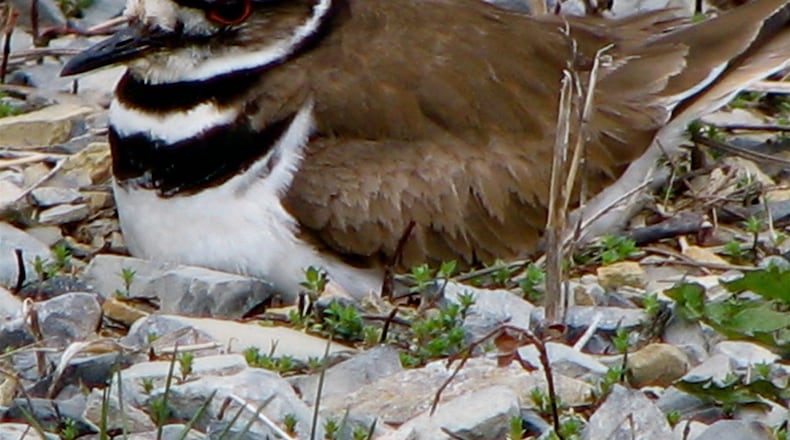At the Charlie Elliott Wildlife Center in Jasper County the other day, I nearly stumbled upon a killdeer plopped down on a swath of bare, gravel-covered ground. I quickly realized that the bird was incubating eggs in a nest that was little more than a simple depression in the gravel — but well camouflaged because of the bird’s brown-and-white coloration.
It reminded me that nesting season for scores of Georgia’s bird species is in full swing now with nests of all shapes, sizes and materials. Nest variety, in fact, is amazing. For instance, sizes range from the ruby-throated hummingbird’s nest of less than 2 inches in diameter to that of the bald eagle’s, 6 to 8 feet wide and weighing as much as a ton. (Bald eagles begin nesting in winter.)
Like the killdeer, some other birds, such as whippoorwills and wild turkeys, merely scrape out indentations in the ground for a nest — hardly nests at all. The ovenbird (a warbler species) nests on the ground but provides some shelter — a small, oven-shaped, domed structure of grass, weeds, bark and other material.
Some birds make their nests underground — most notably, the belted kingfisher, which digs tunnels some 6 feet long into riverbanks.
Cup-shaped nests are the most common types of nests made by dozens of songbird species — warblers, thrushes, flycatchers, vireos, tanagers, robins, cardinals, wrens and others. The nests usually consist of a coarse, strong outer shell built from twigs, grass, rootlets, tendrils and fine vines, with the inside lined with soft material like downy feathers or soft, fluffy seeds.
Some nests are avian architectural marvels, such as the orchard oriole’s intricately woven, pouchlike nest that hangs from tree limbs.
Many other common Georgia birds are cavity nesters. Woodpeckers, of course, drill their nests in trees. Several cavity nesters — chickadees, titmice, nuthatches — use natural cavities in trees or take over abandoned woodpecker nests. Bluebirds and purple martins depend heavily on human-made boxes for nesting. Likewise, chimney swifts rely mostly on the inside of brick chimneys for their nesting sites.
IN THE SKY: From David Dundee, Tellus Museum astronomer: The moon will be full on Thursday — the Planting Moon. Mars and Mercury are in the east just before sunrise. Saturn is in the west just after dark.
Charles Seabrook can be reached at charles.seabrook@yahoo.com.
About the Author





